in cooperation with the class of 2022 master art and public Space - KHIO Oslo
as part of the work “Invitation” by Merete Røstadt
at ROM Galleri Oslo
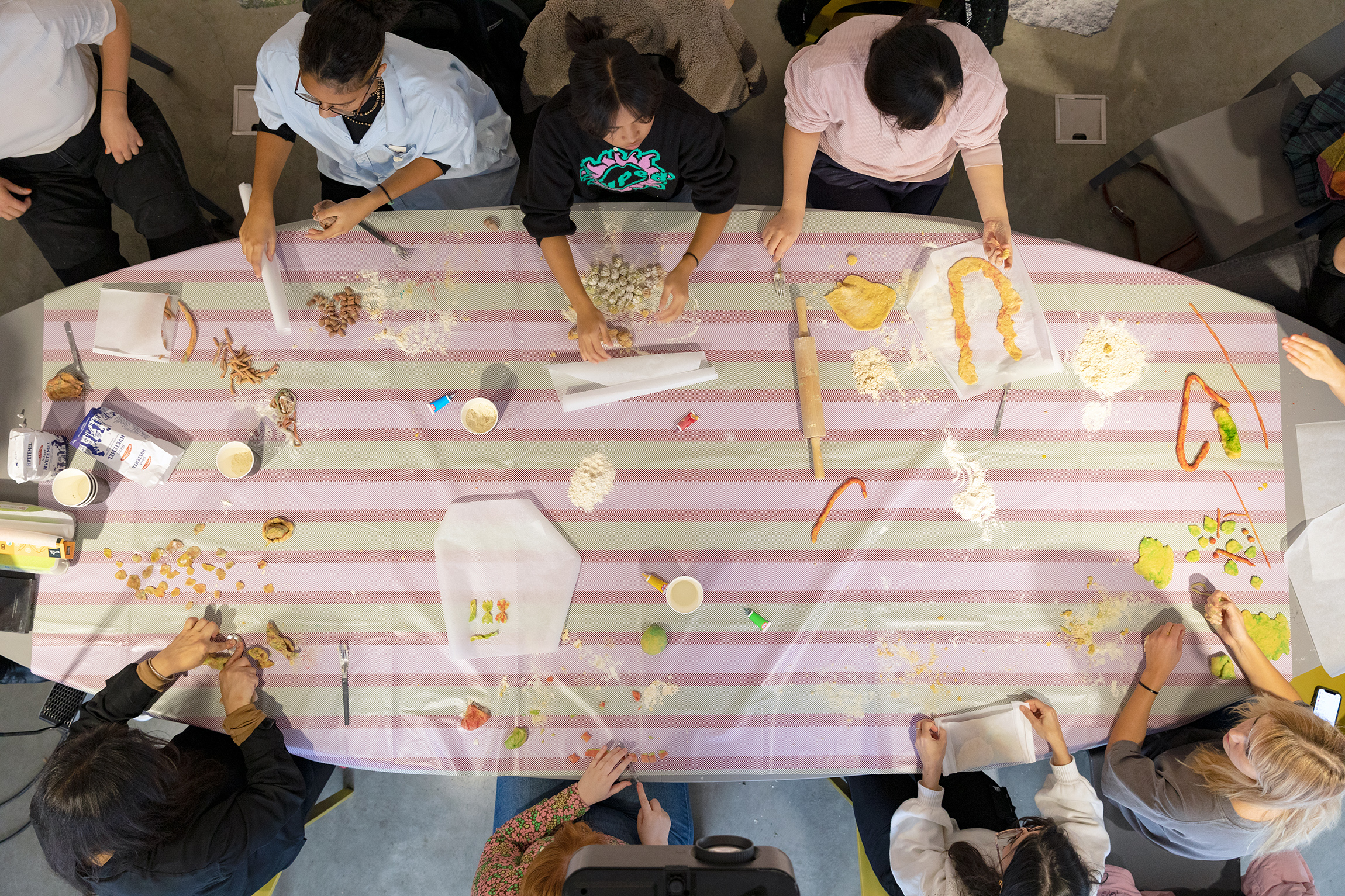
Invited by Merete Røstadt and her work The Thing at ROM Galleri in Oslo, the students from the department Master Art and Public Space at Kunsthogskolen i Oslo were holding a day with workshops for pupils during the Harvesting Holidays (Høsttakkefest) in the Gallery. These Holidays used to be holidays for pupils to help their parents with the harvest, comparable to the Thanksgiving tradition. Today these holidays still exist, but for most pupils it doesn’t have this significance anymore.
We had three guests that day. Unfortunately we figured out too late, that there had been a mistake in the communcation, otherwise we would have had more participants.
We set up this workshop in different parts: After a warm welcome by Katja Schia, and a brief self-introduction, I gave a little tour through the exhibtion and the gallery. Furthermore I shortly introduced the works from Sarah Sekles and Amalie Risom Nyrop to make and open a connection on “Why are we here?”. Afterwards we dived into a workshop held by Carolina Vasquez and Vida Aasen around the topic of amuletts. We shared some lunch and afterwards led to the second workshop, which I prepared with the help of Belén Santillan and Shiyu/Arys Wu. I call the workshop: “Pasta making - let’s talk, elasticity!”
While I was talking through the procedure of making the pasta dough and demonstrating it, the participants were creating their dough following my instructions and gestures.
After the funny runny eggy part was molded and the flour was more and more incorporated, we started kneading our doughs.
During the whole process of kneading and forming the pasta into individual figures, we were having chatting about food, being together, eating together, and sharing anecdotes around the wide topic of elasticity. Some participants had experience in making Pasta from before, others not.
After the workshop the participants took their pasta home, and were invited to cook a meal for their friends, companions or next of kin person with that pasta. I received a few Photos of that dishes, which you can see in the bottom.
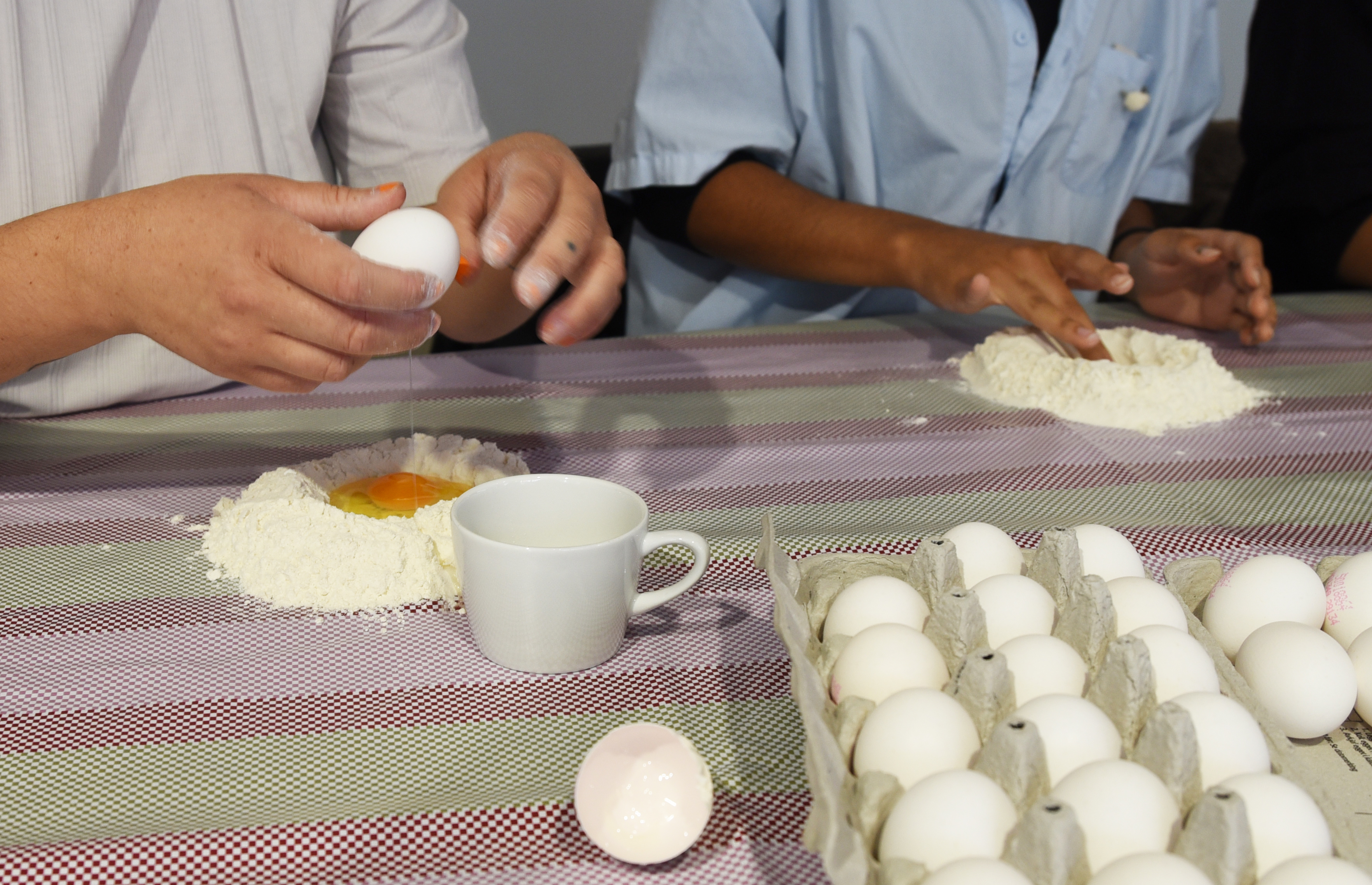 Photodocumentation by Marco Ghilardi
Photodocumentation by Marco Ghilardi
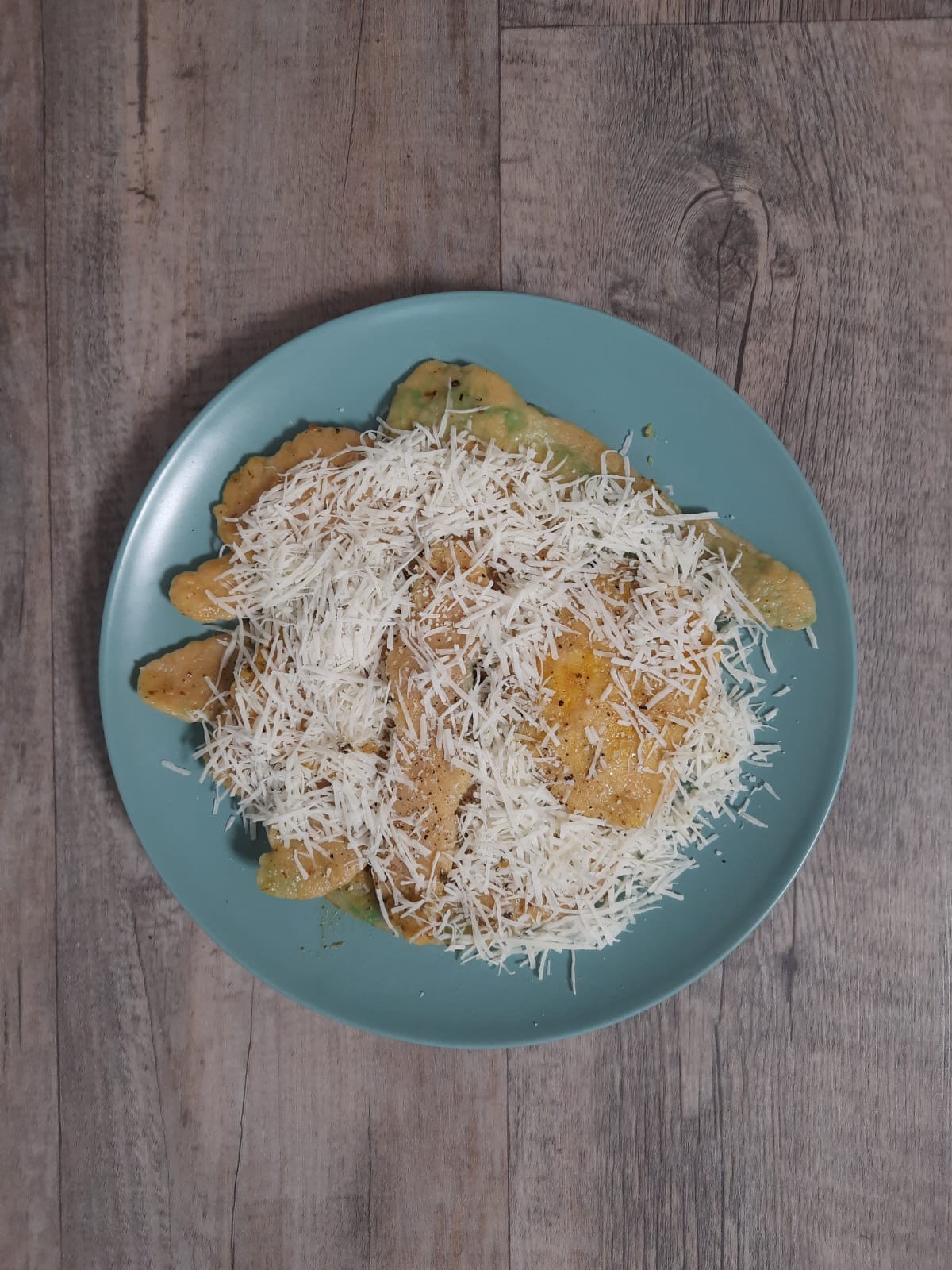
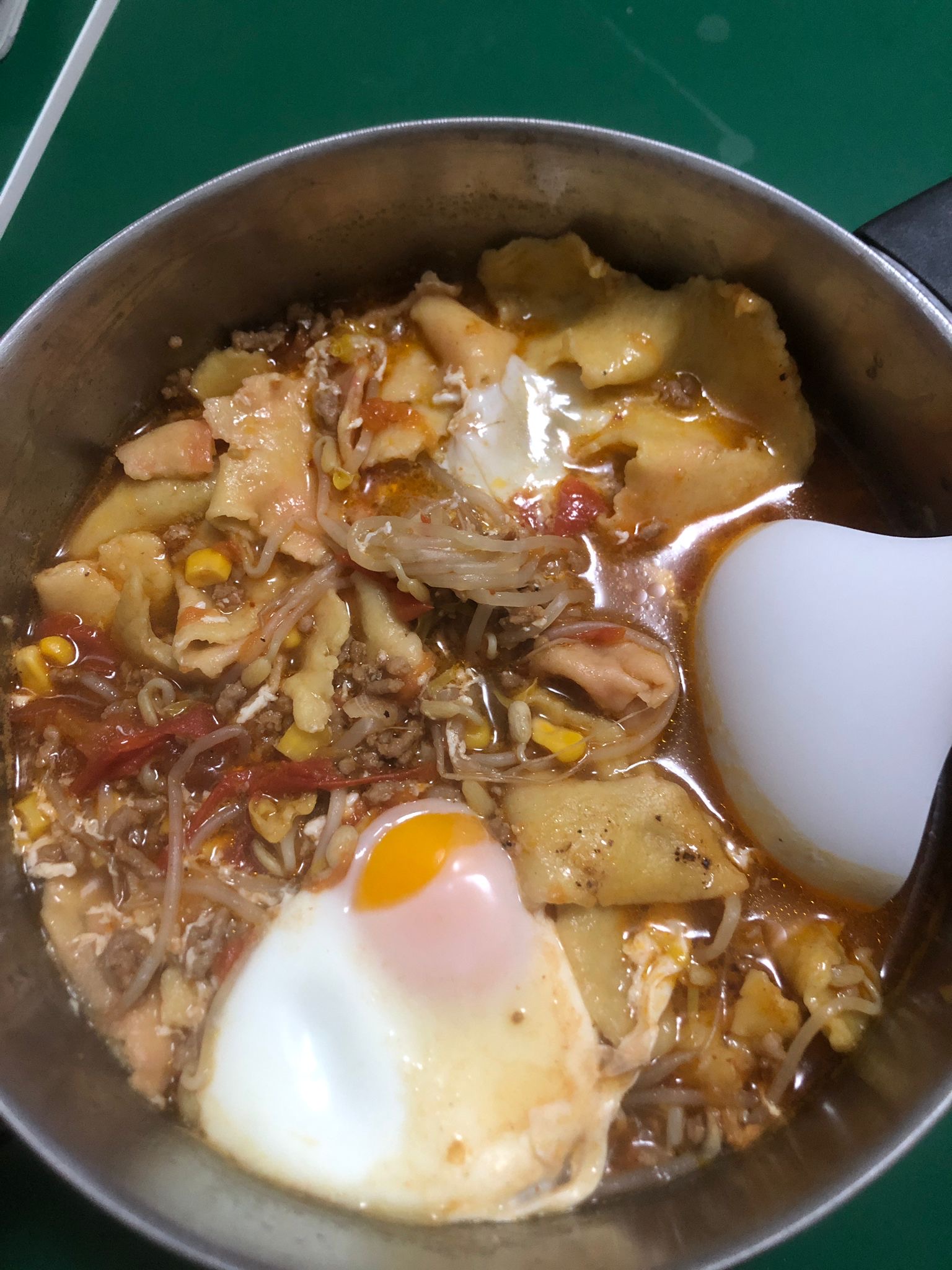
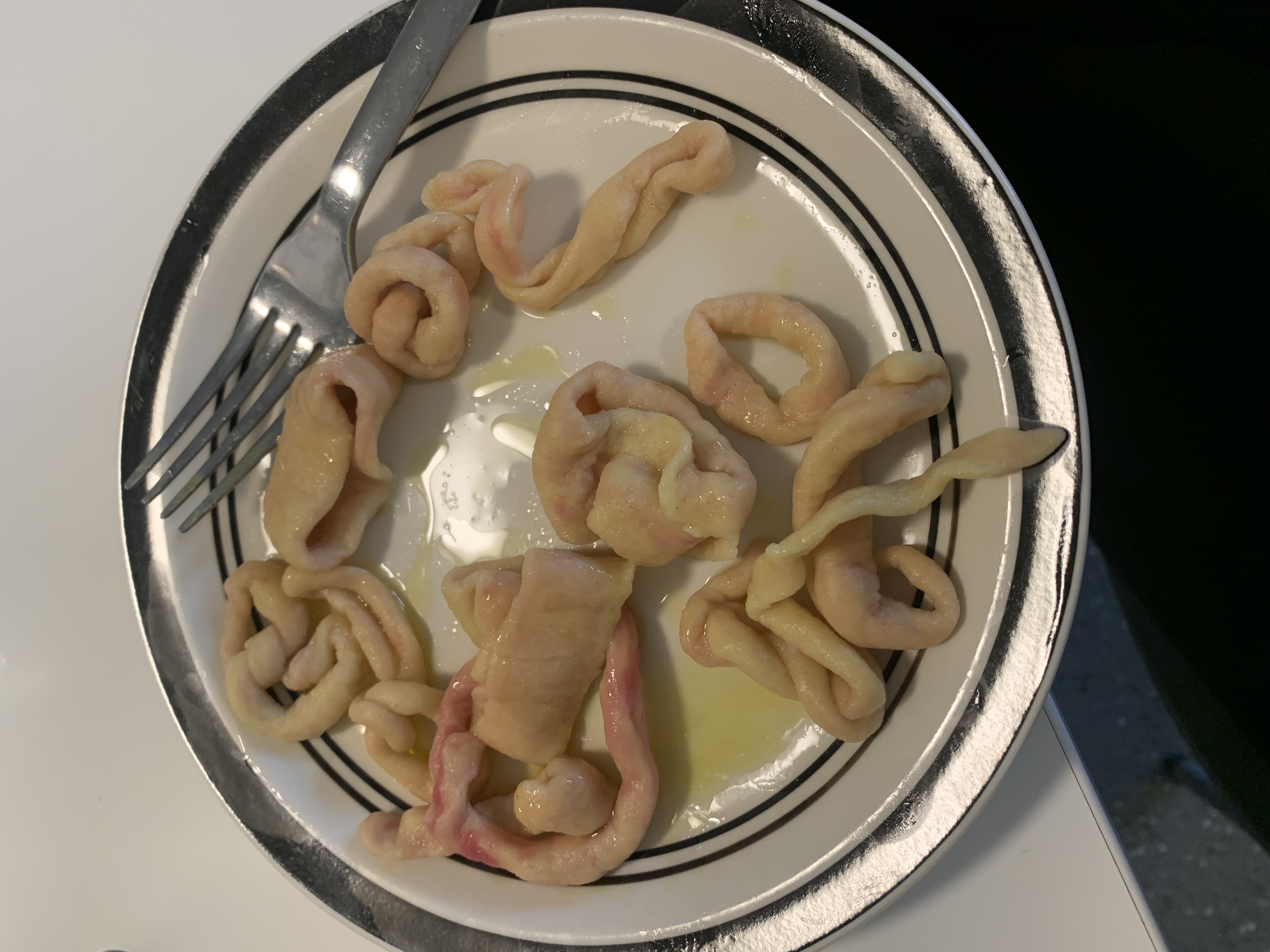
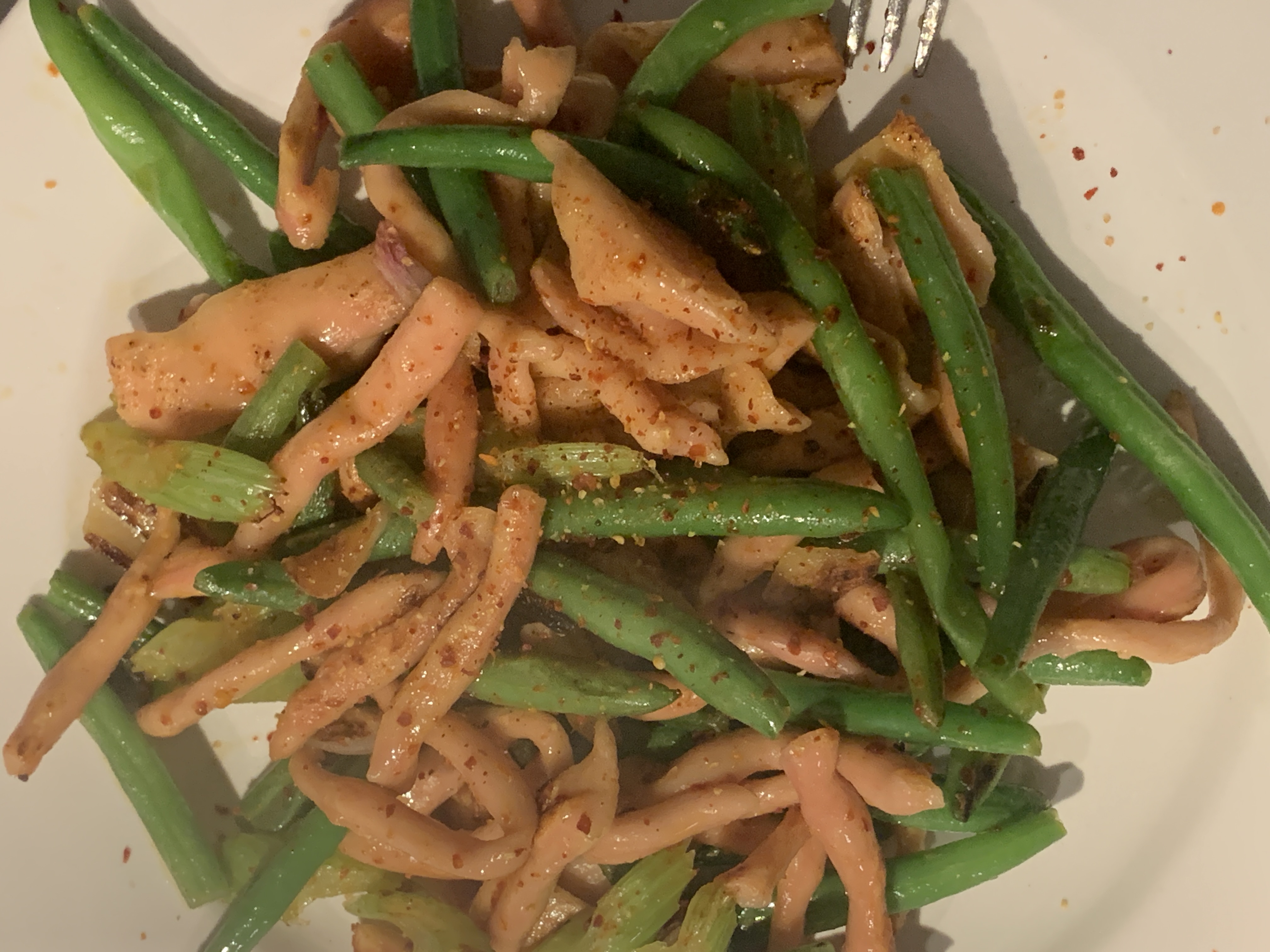
Our collaboration with each other in the group was to me very precious, even though I have the feeling we didn’t include all of our wishes and thoughts. In retrospective I am wondering, how to mantain and request a critical reflection, from the group and oneself, and at the same time work and use the reflection in a productive way. After having had these intense days with Alfredo, what mainly sticks in my head is to approach the doing through knowing, through reflection, through a critical distance.
I still want to share my thoughts: But why making Pasta in a gallery space? What makes neighbourhood?
First of all the context of time and reason why we were there were interesting to think about. What mean harvesting holidays nowadays?
I wished to offer a workshop, that expands my artistic practice/research. To make something that first is relevant to me. To think of the context of my works as the actual work and vice versa. To me this workshop was an interesting part in the wider research about knots, breaking the product-based approach to art with thinking about practices that are familiar due to their every day practice. My interest mainly arrouse from thinking about the elastic procedure of making pasta.
There is this beautiful filmproject Pastagrannies in which the writer Vicky Bennison approaches “grannies” in italy who are making their own pasta. In a beautiful, sensitive way she films old woman, the italian “grannies”, in their process, and catches the atmosphere of a, maybe sometimes romantised in its ruralness, everyday life. I observe a notion of care in these observations, a care for the own local community. It needs to be mentioned, that these images romantizise this reproductive care work, that these woman do. But beyond this critic, I feel touched by seeing the care that this doughs and pastas are made with. This elastic process of making is like a metaphor for neighbourhoods?
It became interesting to me to offer a workshop that can be part of my artistic research and reflection. For me it was the second time to make Pasta. I wanted to be challenged myself and at the same time look at this workshop as a vulnerable situation. I have given and organized different workshops before, very crafty to build things, and also one almost very theoretical and conceptual. How are these experiences comparable?
To admit my vulnerability, to make others feel belonging with their vulnerability.
To explore the field of gaining knowledge.
Reflecting on this workshop seems difficult as there are many circumstances under which it was complicated to actually work. There were many layers, that to dismantle should be done I think in the group. Therefor a lot of attention and care is needed. I think we lacked on that part, as this was a first “proper” collaboration of us MA1.
So the aftercare becomes more important, what are our Learnings?
If we talk about sustainability we mainly are talking about the material, the physical sustainability. What strikes me most, is the thinking about and actually maybe holistic sounding way of also looking at our work as work, the non-physical, non tangible work, that we do with sending an email, with spreading the roles of responsibility. But most of all, the way how we speak and interact, how we act sustainable. It seemed to me as if there is a general fear of unraveling the set way of how we work, think and deal. While it is easy to look at material and critizise the carbon emission that are caused in the production, it is hard work to think about sustainability in a way that is not causing somethin (more or less) measurable or better relatable. But this unraveling requires everyone to reflect and to engage in a process where we have no script, or better have to write our own script, again and again.
collective vocabulary collection: